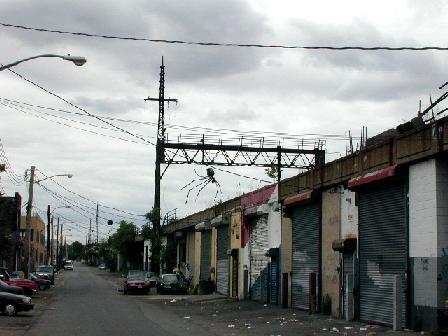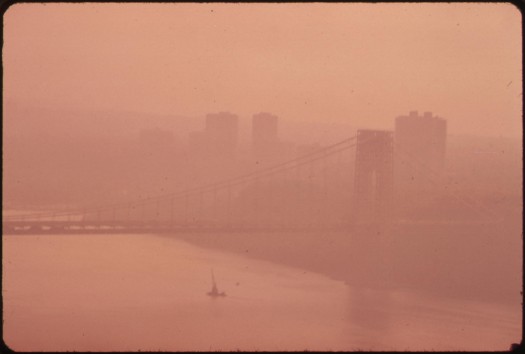
We are celebrating 15 years — and counting — of stories that are deeply researched and deeply felt, that build a historical record of what the city has been.
We are celebrating 15 years — and counting — of stories that are deeply researched and deeply felt, that build a historical record of what the city has been.
STATE OF THE CITY
In his second to last State of the City address, Mayor Michael Bloomberg touched on a wide range of issues, some expected — such as his commitment to merit-based pay for teachers in the public school system — and others somewhat more surprising — such as his support for raising the minimum wage statewide. Community insistence on a living wage was the primary reason the City Council rejected a 2009 plan, backed by the mayor, for Related Companies to redevelop the Kingsbridge Armory in the Bronx. But he has not given up, calling the productive usage of the Armory “one of the priorities of [his] administration.” He used the speech to announce a new RFP for the site, which he sees as a major mechanism for job growth in the city.

Current conditions on the Queensway | Photo: Neil Sullivan via Old NYC
WILL QUEENS GET ITS OWN HIGH LINE?
The High Line is in many ways unique, but it’s by no means the only disused urban rail line in New York in need of repurposing. In Queens, the 3.5 mile leg of the Rockaway Beach Branch rail line, out of service since 1962, runs from Rego Park to the Ozone Park Trailhead, over auto-body shops, through Forest Park and a number of residential neighborhoods. While the current proposals reference the success of the High Line, they differ in intended audience and scope. Friends of the Queensway, the group leading the effort to create a new public space, is prioritizing providing amenities for the surrounding community — such as much-need bicycle infrastructure and community garden space — rather than primarily serving as a tourist attraction. Read more coverage on Treehugger.

The George Washington Bridge in Heavy Smog. View toward the New Jersey Side of the Hudson River | From the Documerica collection.
WHAT AMERICA LOOKED LIKE BEFORE THE EPA
In the 1970s, one of the early acts of the newly formed Environmental Protection Agency (EPA), was a documentary effort called Documerica, for which EPA photographers travelled the country to capture the state of the nation in ecological terms. Forty years later, the National Archives has released 15,000 of the 80,000 photographs the project produced, many of which portray the harsh reality of our national landscape prior to an overhaul in environmental regulation. Be sure to explore these powerful photographs on the National Archive Flickr database and check out more about the collection on Grist.
METROCHANGE
When there’s not enough money left on your MetroCard for a trip, do you toss it? Apparently, lost or discarded MetroCards account for millions of dollars in wasted funds. So, NYU students Stepan Boltalin, Genevieve Hoffman and Paul May have collaborated to create a charity donation platform, called “MetroChange,” intended to turn these losses into gains for the city’s neediest families. The project calls for MetroChange kiosks to be installed in the subway, where commuters can swipe their cards (and recycle them) to donate the remainder of the value left of the car to charity. Read more about this project on the MetroChange blog.
RETHINKING AMERICA’S PARKING CULTURE
For those commuters who don’t use a MetroCard to get around this city, the availability, price and logistics of parking your vehicle often determine driver behavior. In most of the rest of the country, however, parking is abundant and takes up uncalculated amounts of land. Eran Ben-Joseph explores the problems and possibilities of parking in Rethinking a Lot, a new book published by MIT Press, that advocates for a transformation of parking lots into appealing, environmentally sound and better integrated features of our built environment. Michael Kimmelman, architecture critic for The New York Times, explores Ben-Joseph’s argument that parking lots need to be taken seriously by designers and urbanists. Accompanying the article is a fascinating slideshow that encourages a reconsideration of this ubiquitous form that has, until recently, somehow eluded critical investigation by scholars of architecture, urbanism and the American landscape.
NYC HOUSING AUTHORITY TO CONSIDER SELLING AIR RIGHTS, RAISING RENT CAP
On Monday, the New York City Housing Authority (NYCHA) released its five year plan, in which it announced the selling of air rights — the space that can be developed above buildings — as one potential strategy to redress its budget deficit. According to WNYC, NYCHA has also proposed raising the current $2000 rent cap and requiring all households to pay 30% of their income in rent.
BUS TIME
BusTime, the real-time bus tracking website, is now available for all of Staten Island. By allowing users to view exactly how far their bus is from their chosen stop, the real-time bus information “means more time at home with your family, relaxing with a cup of coffee,” according to MTA chairman Joe Lhota. Riders can access the information online, on a mobile phone (simply text a bust stop code to 511123), or — starting this spring — by scanning a QR code at the bus stop. Previously the MTA was having trouble reliably tracking buses through the tall buildings in Manhattan, but Bus Time’s opening up to all of Staten Island bodes well for the other four boroughs, all of which should have complete Bus Time service by 2013 . Read more on StreetsBlog.
The Roundup keeps you up to date with topics we’ve featured and other things we think are worth knowing about.
The views expressed here are those of the authors only and do not reflect the position of The Architectural League of New York.